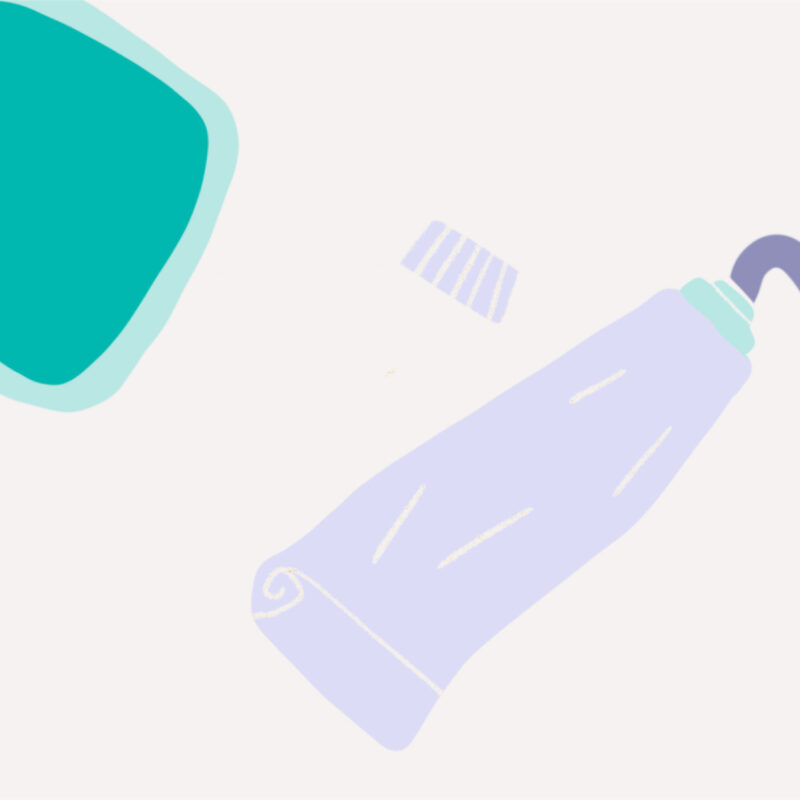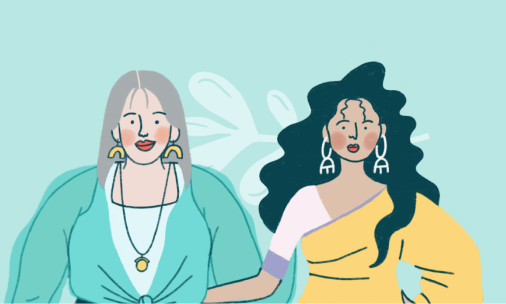My story: Why did I suffer for so many years with endometriosis?
Women are increasingly speaking out about their experiences of endometriosis and fighting for better awareness of the condition amongst healthcare professionals. Vicki struggled for years with pain and many other symptoms, and she shares of the emotional toll it takes when you know something isn’t right in your body, but no one will believe you.
“From when I was only 10 years old, I have had to bear painful and heavy periods every month that meant time off school, and feelings of shame and embarrassment. By my early 20s, back-and-forth trips to the GP only resulted in excruciating internal examinations and endless testing for sexually transmitted infections, despite them always coming back negative. My Dad encouraged me to ask for a referral to a gynaecologist as he had private healthcare with work, and this was the first time I had anywhere close to a proper investigation for the cause of my pain and urinary issues.

“The surgeon confirmed I did have lots of spots of endometriosis – this is tissue that is similar to the lining of the womb but growing elsewhere in your body, where it shouldn’t. After 6 months of taking a progesterone medication, I had another laparoscopy where the endometriosis tissue was burnt away, which doesn’t totally cure the condition. I tried various hormone treatments including the contraceptive pill, Mirena coil, and Prostrap which induced a medical menopause. The aim of all of these was to stop the womb-lining tissue growing. I felt absolutely dreadful and suffered with terrible depression and anxiety, insomnia, fatigue, and gained a lot of weight. My gynaecologist began to suggest in 2016 that as I wasn’t getting on with any of the hormone treatments, a hysterectomy may be my only option left. Further laparoscopies had also shown fibroids and adenomyosis.
“After another 2 years of feeling dreadful most of the time, I decided to agree to a hysterectomy. This was a really difficult decision as I desperately wanted children, but I also wanted to live a life free of pain. When I woke up from the surgery with a sharp stabbing pain, it didn’t bode well. The doctors didn’t understand why, over time, after my surgery, my pain and fatigue only got worse. I started seeing a women’s health physiotherapist who really helped me try and reduce all the tension I had been carrying in my pelvis for years, because of the pain. I began to process everything I had been through and understand more about how my physical health was impacting on my emotions. I sought further specialists and was given contradictory advice about whether I should take HRT or not for my induced menopausal symptoms.
“Then COVID hit. No more counselling. No CBT. No physiotherapy or gynaecology support. I was at my lowest point and still in frequent pain. I couldn’t sit for long, I couldn’t walk far without being exhausted, I had vomiting and diarrhoea a lot, and had to take more time off work with very little support or understanding from my employers. There was a constant crushing or burning sensation on my left side. My GP was concerned about my mental health, and I was convinced that I still had endometriosis.
“Last year, I eventually found a wonderful gynaecologist who listened to my fears and carried out more tests and an MRI scan. Deep infiltrating endometriosis was found, and further laparoscopy revealed many more spots of it in various places, my left ovary was tangled in my bowel, my bowel was attached to the pelvic wall, and there were cysts on my liver. After further surgery, I felt more hopeful and was determined to get on the right type of HRT for me, as I knew I would still have to put up with many symptoms of the menopause if I didn’t.
“Unfortunately, I was not given any information on the menopause or treatments for it after my hysterectomy. Many healthcare professionals wrongly believe you shouldn’t take HRT if you have endometriosis as they think it will make the endo worse. With the right progesterone hormone to counteract the effects of estrogen, it is perfectly possible to take HRT safely and effectively, and even though I don’t have a womb anymore, I still need to take progesterone to minimise the effects on the womb-lining tissue I have elsewhere in my body. With the addition of testosterone as well to help my fatigue and brain fog, I finally feel I’m getting on the right path and can see some light at the end of a very dark tunnel.
“Now I’m on the right type and dose of HRT, I sleep better, I feel less anxious. I’m mentally stronger and have a bit more libido; my skin is also clearer and my hair doesn’t fall out as much now. I know it will take a long time for my body to heal after so many years of such bad health, but I finally feel listened to, helped, and now all I want to do is help other women going through it.
“The only way we can ever improve the minefield of women’s health is by being our own advocates. Some people might see it as oversharing or attention seeking, but I have spent so long being unheard and poorly treated, I refuse to sit back and allow other women to experience the same thing. Even when I felt like giving up, I created a page on instagram called ‘Vagin-atrocity’ to share my story, to hopefully help others and to try in my own way to build more awareness around endometriosis.”
Follow Vicki on Instagram
Look out for Vicki in an upcoming episode of the Newson Health podcast.
Related balance content:
https://www.balance-menopause.com/menopause-library/endometriosis-and-you-booklet/
https://www.balance-menopause.com/menopause-library/endometriosis-and-hrt-factsheet/
Would you like to share your experience of perimenopause or menopause? Write to us at shareyourstory@balance-app.com



![Surgical menopause and menopause in women with endometriosis [Video]](https://balance-menopause.com/uploads/2021/10/Mask-Group-22-800x800.jpg)

